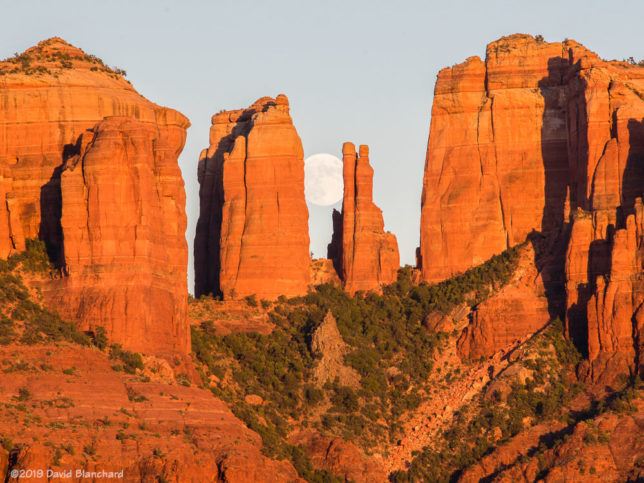On Monday and Tuesday (28-29 October 2019) the thin crescent Moon passed near the planets Venus and Mercury in the evening twilight sky. A check of The Photographers Ephemeris indicated that I could set up at Little Horse trailhead near Sedona and capture the thin crescent as it slipped between the spires of Cathedral Rock. Venus and Mercury would also be visible.
Ah, if only is was as easy as that. I never was able to see the crescent Moon.

But, wait! A closer inspection of the images shows that I did capture the crescent Moon. It was only 1% illuminated in a bright twilight sky. If you look carefully at the image and above the two people, you can just barely see a very thin crescent in the gap.

The next evening the Moon was 4% illuminated and higher in the sky making it an easy target. Venus and Mercury were below and the star Antares was to the left. Fitting all four objects in the image was the goal and I was successful. The only issue was the strong winds which resulted in some camera movement during the image capture.

I used Stellarium to determine how the Moon, planets, and stars would look at that time of the evening. I also used the Ocular plugin to show the field of view (FOV) of various lenses and focal lengths so that I could know, in advance, which lens would capture the whole scene. Very helpful!













